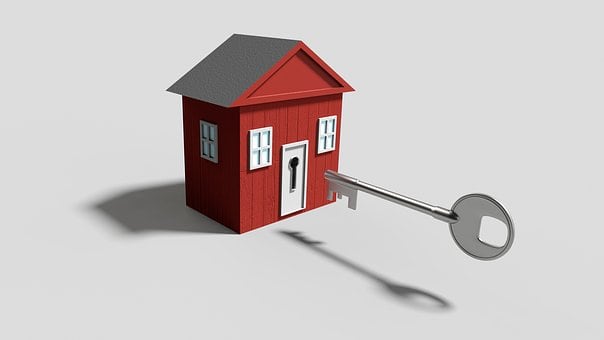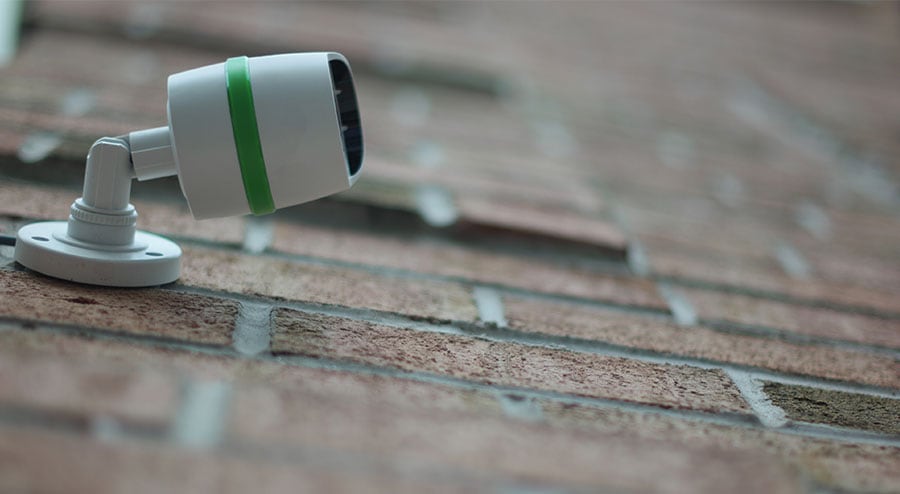In an increasingly interconnected world, ensuring the safety and security of our homes has become a paramount concern. A home security assessment is a critical process that allows homeowners to thoroughly evaluate vulnerabilities and strengthen weak points, fortifying their living spaces against potential threats. By carefully analyzing the various aspects of home security, from physical entry points to digital vulnerabilities, individuals can take proactive measures to safeguard their property and loved ones.

Understanding The Significance Of Home Security Assessment
A home security assessment is a systematic evaluation of a property’s security measures and vulnerabilities. It involves inspecting the physical aspects of the home, such as doors, windows, locks, lighting, and alarm systems, as well as evaluating digital security measures like passwords, online privacy, and home automation systems.
The importance of a home security assessment lies in its proactive approach to safeguarding the home and its occupants. Rather than waiting for an incident to occur, a thorough assessment allows homeowners to detect potential risks and take preventive actions. It provides peace of mind, knowing that one has diligently evaluated their home’s security and taken steps to mitigate potential threats.
A home security assessment empowers individuals to make informed decisions about their security needs. By gaining a comprehensive understanding of the home’s vulnerabilities, homeowners can choose appropriate security measures tailored to their specific circumstances. This tailored approach optimizes security investments, ensuring that resources are focused where they matter most.
The majority of burglaries occur during daylight hours, with most incidents taking place between 10:00 AM and 3:00 PM when homeowners are typically at work or school. This highlights the importance of evaluating vulnerabilities and implementing security measures to protect homes during times of lower occupancy, emphasizing the need for a comprehensive home security assessment to ensure protection throughout the day.
Identifying Vulnerable Areas And Common Weak Points
Certain areas of a home are more susceptible to break-ins and intrusions due to their accessibility and visibility. Ground-level entry points are the primary targets for burglars. These typically include front doors, back doors, and first-floor windows. These areas are attractive to intruders as they provide relatively easy access to the home and are often shielded from view by fences or landscaping.
Front doors are particularly vulnerable, as they are the main entry point for homeowners and guests. Burglars may attempt forced entry through weak locks or compromised door frames. Back doors are also popular targets, especially if they are hidden from view. Sliding glass doors can be susceptible to break-ins if not properly secured.
First-floor windows are attractive entry points due to their accessibility and potential lack of security measures. Windows located in secluded areas of the property, such as the side or back of the house, are especially susceptible to break-ins as they offer intruders a degree of privacy while attempting to gain entry.
Identifying weak points helps homeowners evaluate the effectiveness of their existing security measures. The assessment might reveal gaps in the security system that require immediate attention. By addressing these weaknesses, individuals can bolster their home’s protection and create a more robust security environment.
Potential Risks Associated With Specific Locations
Each area of a home presents its own set of potential risks and vulnerabilities. Windows, for instance, can be breached if they are not equipped with proper locks or if they have deteriorated over time. Sliding glass doors might be compromised if their tracks are not well-maintained or if they lack additional security measures.
Doors, as mentioned earlier, are a common weak point. Weak or damaged locks, flimsy door frames, or doors made of hollow materials can be easily kicked in or forced open. Garages can also pose risks, especially if they have direct access to the home. A compromised garage door or inadequate security measures can provide intruders with an opportunity to enter the property undetected. Points of entry that are less visible from the street or neighboring properties can be attractive to burglars, as they offer a greater chance of going unnoticed.
Enhancing Perimeter Security
Securing the home’s perimeter is a crucial step in fortifying the overall security of a property. Implementing effective strategies creates a formidable deterrent for potential intruders and enhances the safety of residents. One of the primary measures is installing a sturdy and well-maintained fence around the property. A durable fence acts as a physical barrier, making it challenging for unauthorized individuals to gain access. Opt for materials like wrought iron or steel that are difficult to climb or breach. To control entry points, complement the fence with secure gates equipped with strong locks.
In addition to physical barriers, adequate outdoor lighting plays a vital role in perimeter security. Well-illuminated areas leave no room for intruders to hide and make it easier for residents to detect any suspicious activity. Installing motion-activated lights near entry points and along pathways ensures that any movement triggers an immediate response. The sudden burst of light can startle and deter potential burglars.
Using security signage can create a psychological deterrent. Display signs indicating the presence of a security system or surveillance cameras, even if you do not have one, can give the impression of increased security. Intruders are less likely to target a property that appears well-protected.
To create a comprehensive security approach, consider the role of landscaping as well. While landscaping beautifies the property, it can inadvertently create hiding spots for intruders. Regularly trim bushes and shrubs near windows and doors to maintain clear visibility both inside and outside the house.
Importance Of Landscaping For Home Security
Landscaping is an often overlooked yet significant aspect of home security. A well-maintained and thoughtfully designed landscape can enhance security by deterring potential intruders and providing better visibility for residents.
A well-kept garden and manicured lawn can create a perception of a well-cared-for property, which may discourage burglars from targeting your home. Intruders are more likely to choose homes with overgrown or neglected yards, as they believe such properties are less likely to have security measures in place. Landscaping can be used to direct outdoor lighting effectively, illuminating pathways and key areas around the property. Proper lighting reduces the risk of potential hiding spots for intruders.
Strategically placed thorny bushes or plants can obstruct access to vulnerable areas, such as windows, making it more challenging for intruders to enter the property unnoticed. Properly trimmed landscaping ensures clear sightlines from both inside and outside the house. Untrimmed bushes and trees near entry points can provide cover for intruders attempting to break in.
Digital Security Measures
In the digital age, ensuring online privacy and security is paramount for homeowners and occupants. With the increasing reliance on internet-connected devices, cyber threats have become more sophisticated and prevalent. Protecting personal information and digital assets is essential to safeguard against identity theft, financial fraud, and unauthorized access to sensitive data.
Online privacy is crucial to prevent data breaches and unauthorized access to personal information. Homeowners and occupants should be vigilant about the information they share online, especially on social media platforms. Oversharing personal details can provide cybercriminals with valuable information that they can use for phishing attempts or social engineering attacks.
Maintaining robust digital security measures is equally important. Implementing strong passwords for online accounts and using two-factor authentication (2FA) whenever possible adds an extra layer of protection against unauthorized access. Regularly updating software and operating systems is also essential to patch vulnerabilities that could be exploited by hackers.
Google Authenticator is a popular two-factor authentication app developed by Google, designed to enhance the security of online accounts. It works by generating time-based one-time passwords (TOTPs) that are required alongside the user’s password to access an account. This extra layer of security helps protect against unauthorized access and potential data breaches. Other similar brands in the market include Authy, Microsoft Authenticator, and LastPass Authenticator. These apps offer similar functionalities, providing users with a secure way to implement two-factor authentication across various platforms and services. Users can choose from a range of authenticator apps based on their preferences and compatibility with the services they use, ensuring an added level of protection for their digital identities.
Educating all household members about online privacy and security best practices is crucial to create a security-conscious environment. Being mindful of the websites visited, avoiding clicking on suspicious links, and refraining from downloading attachments from unknown sources are simple yet effective measures to mitigate the risk of cyber threats.
Tips For Safeguarding Personal Information And Using Strong Passwords
Safeguarding personal information begins with being cautious about the data shared online. Homeowners and occupants should limit the information they disclose on social media and be cautious when interacting with unfamiliar websites or email communications. Avoid sharing sensitive details like full addresses, phone numbers, or financial information publicly.
Using strong passwords is one of the most effective ways to protect online accounts. Passwords should be complex, containing a mix of uppercase and lowercase letters, numbers, and special characters. Avoid using easily guessable information, such as birthdates or names of family members, as part of passwords. Each online account should have a unique password to prevent a domino effect in case one account is compromised.
Password tools like NORD, Dashlane, and other companies offer valuable solutions for managing and enhancing password security. These tools help users generate strong, complex passwords that are difficult to crack, reducing the risk of unauthorized access to their accounts and sensitive information. They often include features like password managers, which securely store and organize passwords for various online platforms, making it easier for users to access and use their credentials while maintaining security. Additionally, many password tools incorporate functionalities such as password strength assessment and periodic password change reminders, further promoting a robust security approach. Users can choose from a variety of password tools available in the market based on their specific needs and preferences, ensuring a safer and more convenient online experience.
Neighborhood Factors And Crime Trends
The safety and security of a home are not solely determined by its physical attributes but are also influenced by various neighborhood factors. Understanding the role of these factors is essential for homeowners and occupants to comprehensively assess their home’s vulnerability to potential threats. One crucial element is the crime rate in the neighborhood. High crime rates increase the risk of property crime, such as burglaries and thefts, making it vital for individuals to be aware of the safety levels in their area. Conversely, neighborhoods with lower crime rates generally offer a safer living environment.
The geographical location and surroundings of a neighborhood can also impact its security. Homes situated in secluded areas with limited visibility from the street may be more attractive to intruders due to reduced chances of being observed. Additionally, the proximity to high-risk areas can have spillover effects on neighboring communities, leading to an increase in property crime incidents.
Another significant neighborhood factor contributing to home security is community involvement. Strong community bonds and active neighborhood watch programs can significantly enhance safety. Neighbors who actively look out for each other, report suspicious activities, and collaborate on security measures create a more secure environment for everyone.
Well-maintained infrastructure and proper street lighting play a crucial role in neighborhood security. Adequate lighting reduces potential hiding spots for intruders and enhances overall visibility, deterring criminal activity. Understanding and evaluating these neighborhood factors provide homeowners and occupants with valuable insights to enhance their home’s security and create a safer living environment.
Ways To Assess Local Crime Trends And Patterns
Assessing local crime trends and patterns is crucial for understanding the security environment of a neighborhood. One effective approach is to obtain crime statistics from the local police department. Websites such as SpotCrime, CrimeReports, and local government websites are available resources to gain insight into crime statistics in your local area. Analyzing this data provides insights into the types and frequency of crimes in the neighborhood, highlighting any emerging patterns or trends.
Online crime maps offered by cities and law enforcement agencies display reported incidents on a geographic layout, helping homeowners visualize crime patterns and identify high-risk zones. Participating in neighborhood watch meetings and engaging with local community forums and social media groups can also offer real-time updates on neighborhood safety and provide firsthand insights from fellow residents.
Involving Family Members In Home Security Planning
Involving all family members or household occupants in the home security assessment process is of utmost importance for creating a safe and secure living environment. Each individual’s active participation ensures that diverse perspectives and concerns are taken into account when designing security measures. When all family members are invested in security planning, they become more vigilant and responsible for their own safety and the safety of others.
When family members are involved in the assessment process, they gain a better understanding of potential risks and vulnerabilities specific to their home. They become more aware of the areas that may need reinforcement or additional security measures. This heightened awareness fosters a culture of security consciousness within the household, making everyone more alert to potential threats.
Including family members in security planning promotes a sense of ownership and responsibility. When individuals actively contribute to creating the safety plan, they are more likely to adhere to the security measures and take their role in ensuring home security seriously. This collective effort creates a unified front against potential intruders and enhances the effectiveness of the security measures put in place.
Conclusion
A thorough home security assessment is a vital step in protecting one’s property and ensuring the safety of its occupants. By evaluating vulnerabilities and strengthening weak points, homeowners can proactively address potential risks and enhance their home’s security. Assessing doors, windows, and other points of entry, as well as implementing advanced security devices, provides a formidable defense against potential intruders. Reinforcing the perimeter and utilizing landscaping to deter unwanted access further fortifies the property.
Involving family members in the security planning process fosters a sense of responsibility and unity, while staying informed about local crime trends and empowers homeowners to make informed decisions. Additionally, paying attention to digital security measures safeguards against cyber threats and potential data breaches. A comprehensive home security assessment not only provides peace of mind but also creates a safer living environment for everyone, protecting what matters most – our homes and loved ones.




